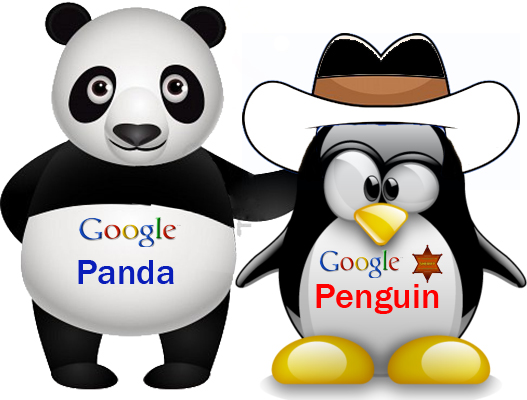Table of Contents
Introduction
Difference Between Google Panda And Google Penguin
Before understanding the difference between Google Panda and Google Penguin, you should have in mind that Google’s algorithm deviations 600 times a year. This is the minimum we are speaking about here. Sometimes the setting can be smaller and other times it can be massive. Penguin, Panda, and Hummingbird and Local are mostly algorithmic updates that the search engine results page (SERP) uses to display important, accurate and quantifiable results.
What is Google Panda?
Google Panda available in 2011 and has been offering monthly updates ever since, called “Surges.” The key goal is to make sure the SERP does not have low content. In principle, spam or content that the SERP considers outdated and unrelated to context identified and removed. Panda 4.1 introduced on September 23, 2014. Google’s Pierre Far believes that low-quality content should target more precisely. From an applied perspective, it mainly aimed at pages with little content and marketing tools such as games, texts, etc.
Google recognized that eBay is quite a powerful website, and therefore one of the best web-based domains. However, eBay users had also generated an endless stream of scarce content that most Google users found useless. This was the reason why the purge carried out.
The Panda update has been dubbed “Farmer” due to its negative impact on many content farms. Content farms are websites that collect or sometimes steal information from various websites. Their particular purpose is to have a great page index that helps them rank well for a wide variety of keywords. one of the reasons why Google strives to create original content for proper search engine optimization. The most important point to note about Panda is that it is becoming more mature and efficient in demarcation and removal of useless and stolen content. This will definitely have a negative impact on websites that haven’t taken the right steps to produce good
What is Google Penguin
Google Penguin primarily targets over-optimized content, one that has far too poor link building technique and keyword stuffing. The term “keyword stuffing” refers to using keywords that are not mandatory, are not organic or are not relevant. This done so that the page has a high priority in Google search. The latest update for Penguin is Penguin 3.0, and it released on October 18, 2014. When the fifth update for Google Penguin, Penguin 2.0 came out, several websites were removed, some of which are now trying to redeem themselves. These updates frequently happen, which is why webmasters eagerly await and prepare for them.
Also Read: Information of Structures and Algorithms
differences
So the fundamental difference between Google Panda and Google Penguin is that Panda targets spam websites and Penguin deals with broken links and excess keywords. In Panda’s case, the only way to survive Panda’s changes is to update the website and remove useless, low-quality pages. You should also check out over-optimized websites and improve brand awareness and social media usage by starting new campaigns. You can also separate affected websites from unaffected websites.
With Penguin, you have to put black hat SEO techniques aside. Also, don’t get carried away with the following:
Too much link building
Keyword filling
Entry sheets
Content that has no meaning or bearing
You should also remove links from the same IP address or domain. If you do this, your ranking will drop significantly. You can also use Google’s Disavow Links Tool to remove excessive links. You should also brand sure that your page does not have any artificial links created to tamper with Google search engine results as Penguin will severely penalize you. In the case of Panda, you need to remove the plagiarized pages.
Panda doesn’t usually target individual pages. Therefore, if your website contains very little original content and very little stolen content, Panda will punish you. However, Penguin only attacks unique locations. However, there is a chance that your entire website will penalize for too much keyword spam.
In Panda’s case, sending a restore request is useless. Penguin is almost the same, but there is hope with manual warnings. With Panda, it doesn’t help if you remove the links manually because the content is more important here. Manual removal can help with Pinguin, but you should allow enough time.
Once you’ve removed unwanted content with Panda, your website can restored until the next update. However, it takes longer with Penguin because the updates are not as regular as with Panda.

